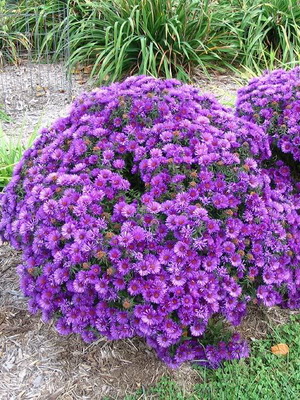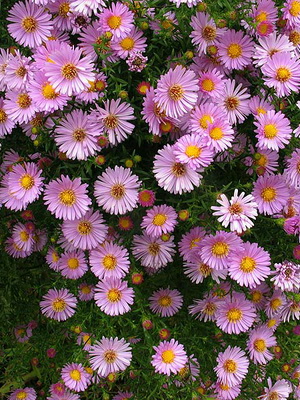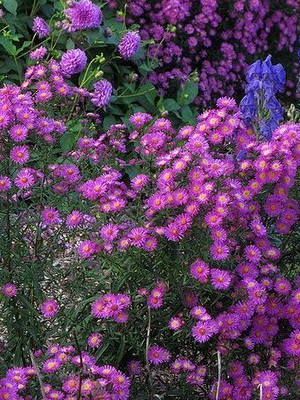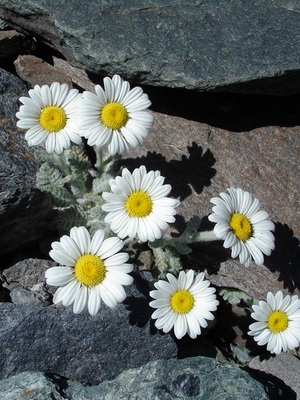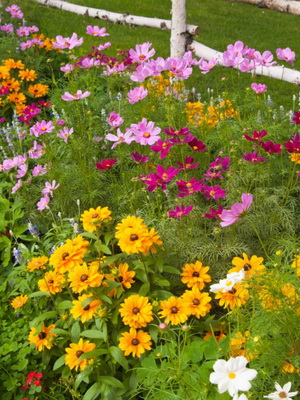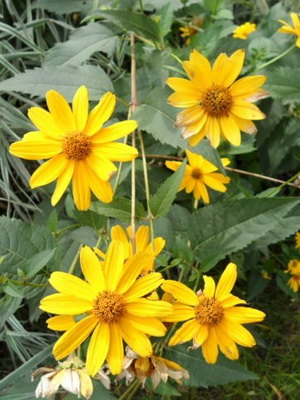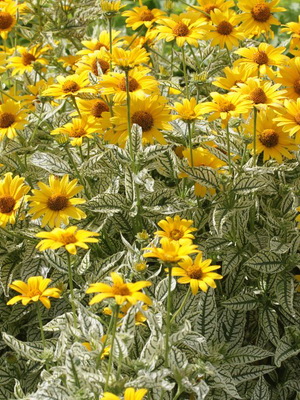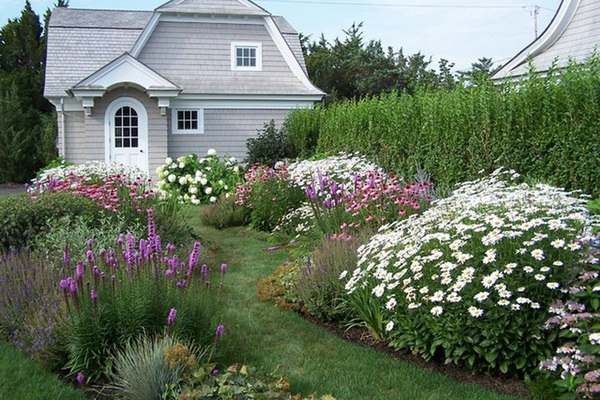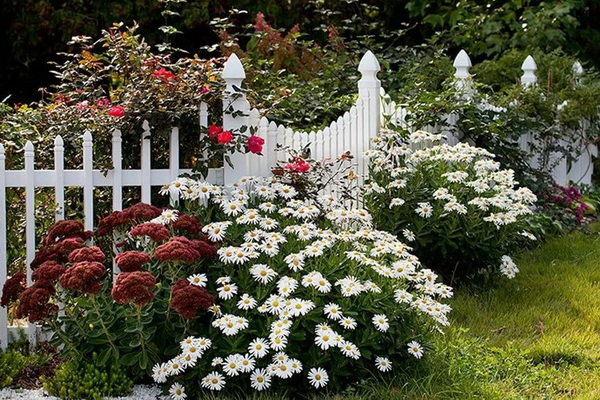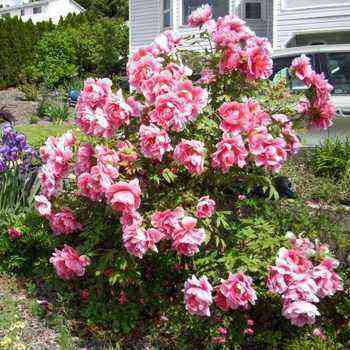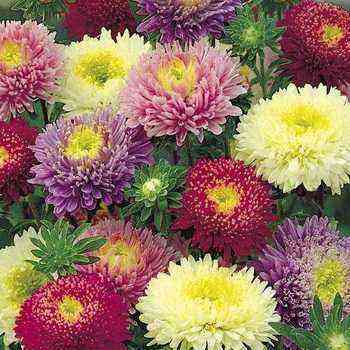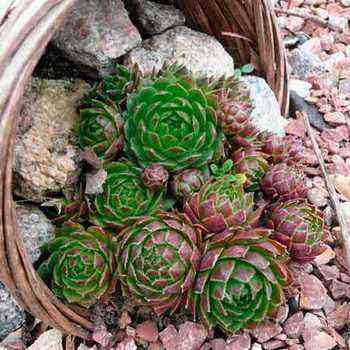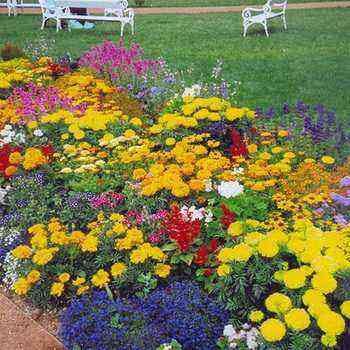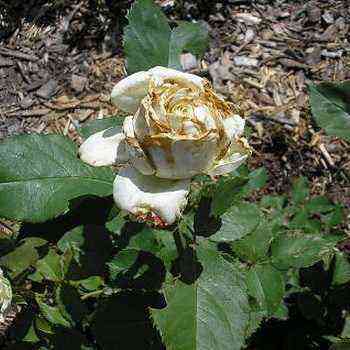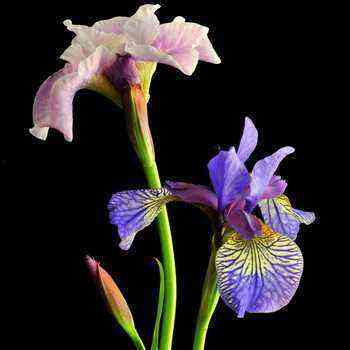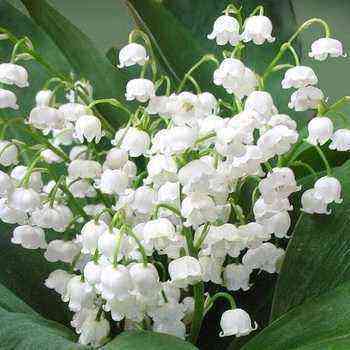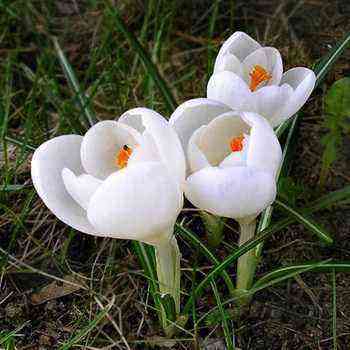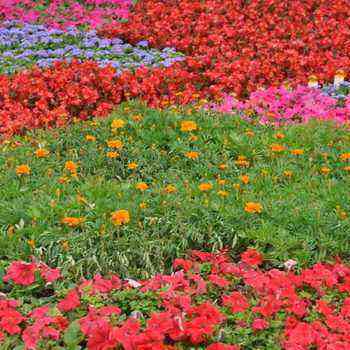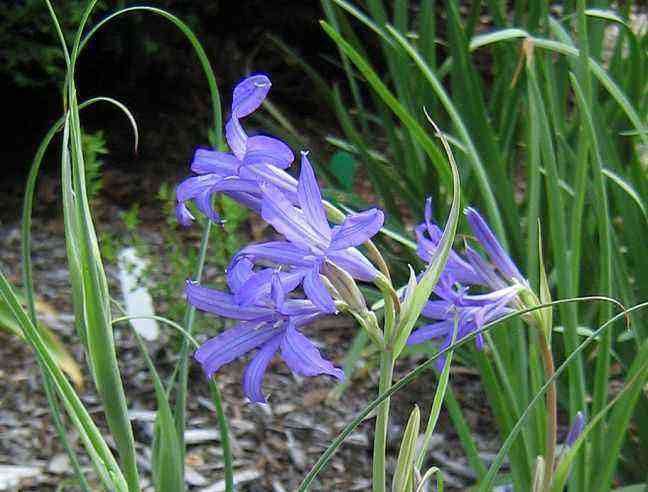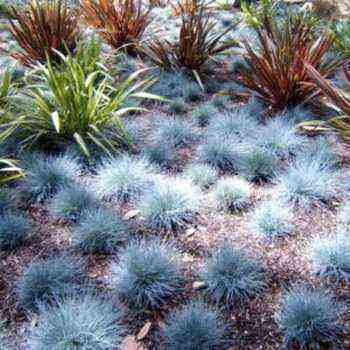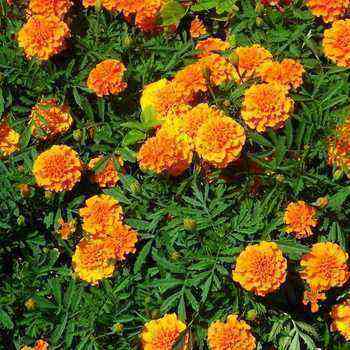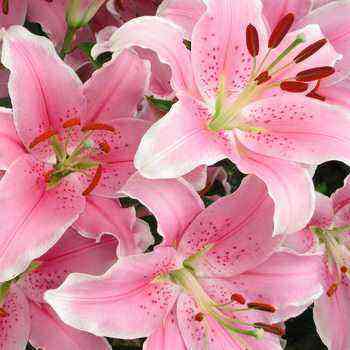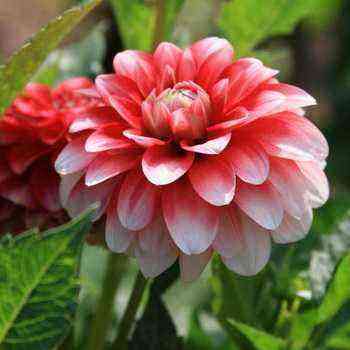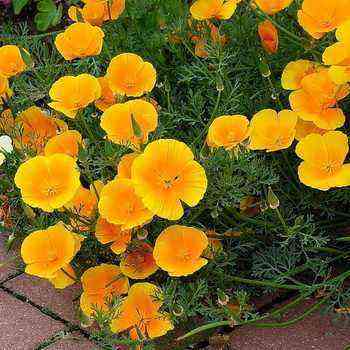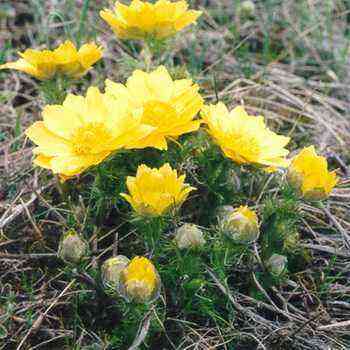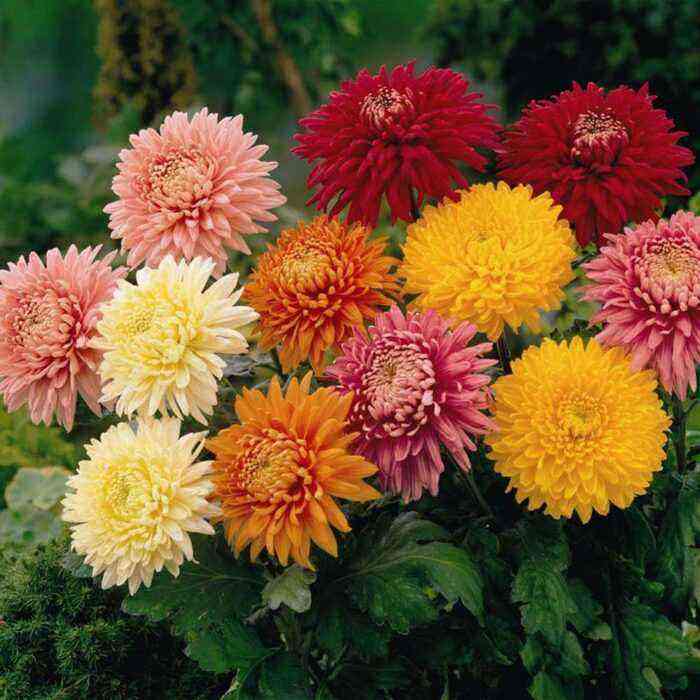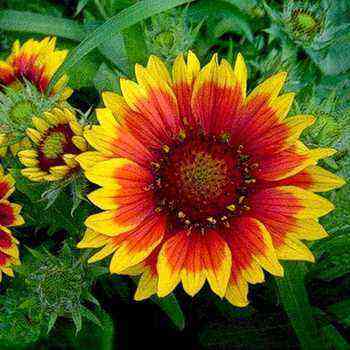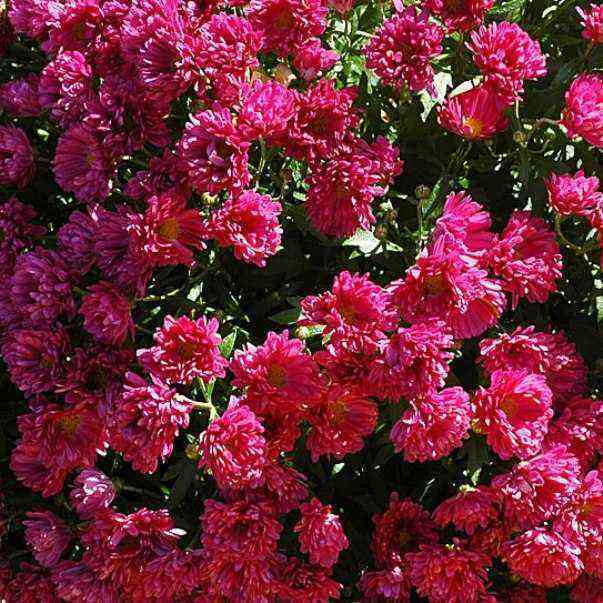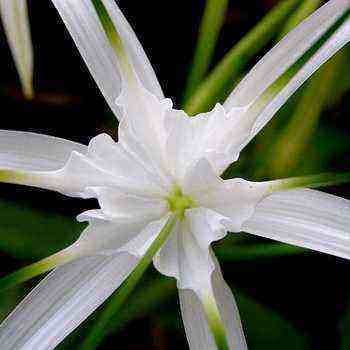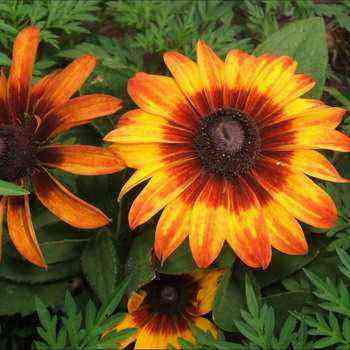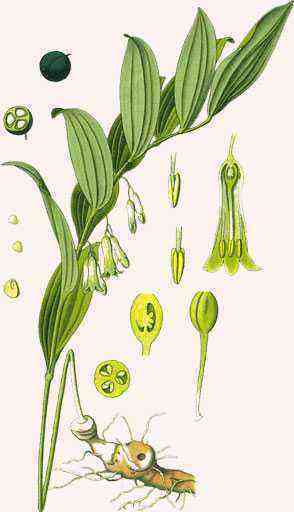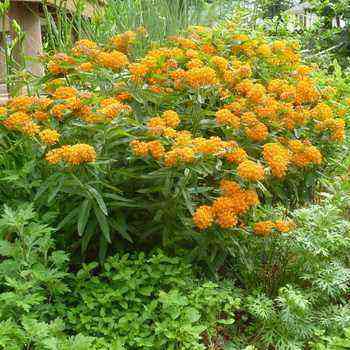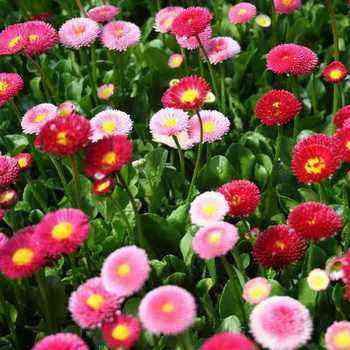
A native Russian flower, chamomile is appropriate not only in the field, but also in the garden. Of course, we are not talking about a pharmacy chamomile with small flowers, but about its larger sisters. This includes plants with chamomile-like flowers. All of them, like chamomile, belong to the Asteraceae family. These daisy-like plants, although they differ in the names of species and even genera, have much in common in their “habits”.
On this page you will find out what the flowers that look like multi-colored daisies are called and what they look like.
What are the names of flowers that look like multi-colored daisies
Garden flowers such as perennial asters are very similar to daisies.
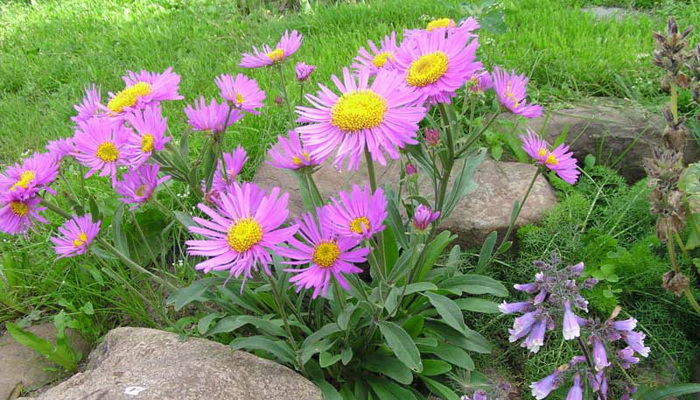
For example, the alpine aster (Asfer alpinus) . Its flowers are painted in pink, blue, lilac and white tones, the latter are poured daisies, only with a sprout of only 25 cm.
Alpine aster blooms in May, much earlier than daisies, but just as luxuriantly and for quite a long time.
But other types of asters bloom only in the fall, which can be credited to them, because at this time there are not enough flowers.
These are New England and New Belgian asters (A. nobo-angliae, A. novo-belgii) . These are already tall, and sometimes very tall, in human height, bushes, powerful, fluffy. Don’t ask me how to tell one from the other. There are a lot of varieties, they differ in terms of flowering and color of flowers.
New England and New Belgian asters, perhaps, live longer than others. Their bushes are getting thicker and more voluminous from year to year. Only the middle of them can thin out a little.
These photos show flowers that look like daisies:
What other flowers are similar to daisies, and what are they called? Yellow daisies are, of course, buzulniks. Their “flowers” are collected in a variety of shields, panicles or brushes that adorn the garden throughout the second half of summer. Perhaps they stand out from the ranks of daisies in that they are more hygrophilous. Want a buzulnik? Buy any! Species are extremely unpretentious, varietal ones with a purple leaf, too, only the spotted varieties are still worth looking at.
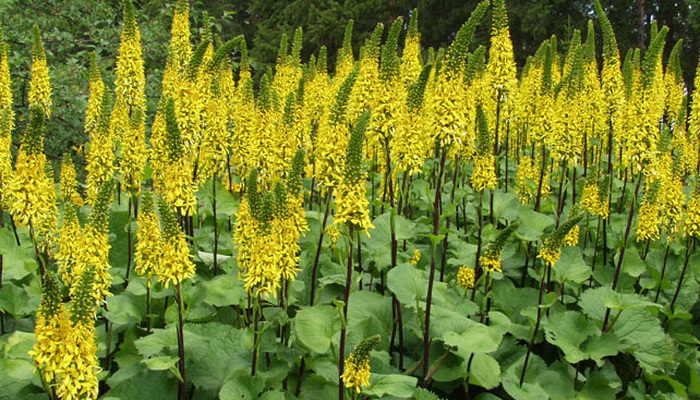
Most grow in a dense bush, but there are also aggressors – Siberian buzulnik (Ligularia sibirica) .
Rudbeckia also look like yellow daisies. The most important thing here is the size of the “flower” – it is impressive for a rudbeck.
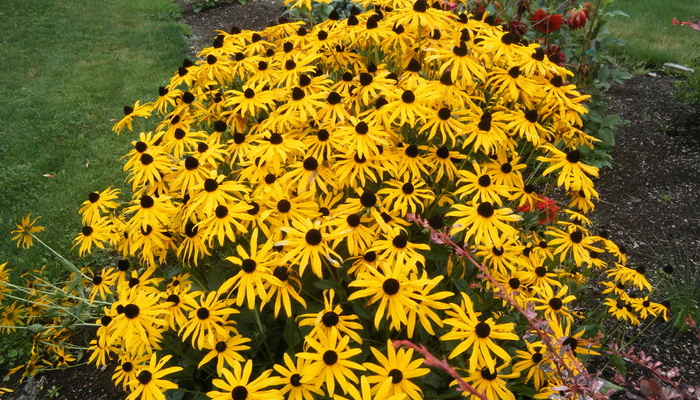
Mainly grown are rudbeckia shining (Rudbeckia fulgida) and yellow-brown hybrid varieties. Rudbeckia as a whole are short-lived, it is worth monitoring their periodic reseeding and division.
What other flowers look like daisies are described below.
What other flowers are similar to garden daisies?
Of the multi-colored flowers that look like chamomile, pink echinacea can be distinguished. Why pink though?

This species echinacea purpurea (Echinacea purpurea) has dark pink flowers.
And her varieties have no shades! White, yellow, greenish, orange, pale pink, almost crimson! And sometimes thick hemispherical centers, like pompons. Echinacea grows rather slowly, but they live longer than chamomile. But it is also desirable to divide them in three years.
Well, for a snack, tiny daisies for a rock garden. These are mountain small-petals forming dense clumps pressed to the ground. Their place, of course, is on a hill, among the pebbles, in the same rocky dump. There are a lot of hummock small-petals, many can be recommended, for example, Erigeron scopulinus.
It is better to divide and transplant chamomile-like flowers in the spring, as soon as the snow has melted. Then they will not even notice the execution and will bloom in the summer, as if nothing had happened. Chamomile can also be propagated by seeds, it is easier than easy: you throw the seeds into the ground and they germinate. Seedlings are developing briskly. When collecting your seeds, keep in mind that Compositae have a high percentage of defective seeds.
These are such unpretentious plants that it is difficult to notice pests and diseases on them. It happens that slugs spoil the foliage, it happens that in a wet year, the chamomile will partially rot. But usually these are trifles, not destructive for plants.
Look at the photo of flowers similar to chamomile, the names of which are given above:
Chamomile in garden landscaping (with photo)
Well, now, about the chamomile itself. What we take for a large flower with a yellow (most often) center is actually an inflorescence of two types of flowers: some, external ones, seem to us as petals, others, internal flowers, we take for stamens. Actually, that’s why the family is called that, that the flowers are so cunning, complex.
But in the culture, chamomile is simple. Probably their only drawback is their relative fragility. They grow rapidly, develop rapidly, but after three years they begin to sprout. It is easily “cured” – by division.
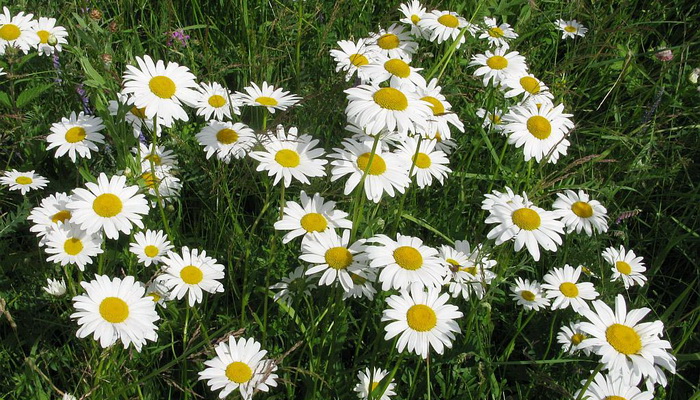
That white charm with a fragrant yellow center that is found in fields and in village front gardens is meadow chamomile , or common daisy (Leucanthemum vulgare) .
It does not live long, but it sows itself – just know to remove unnecessary seedlings. But in the design of the garden, such a daisy is irreplaceable – it decorates any flower beds with its radiant whiteness. No care. A similar chamomile, only larger in size, is the largest chamomile (L maximum). It is more durable. And she also has several varieties, of which the most attractive are usually terry.
Chamomiles are unanimous in their attitude to light: they love it, and it is better to plant them in full sun. Eating chamomile is also not averse, only on oily soil they grow faster.
See how beautiful daisies look in landscape design in these photos:
